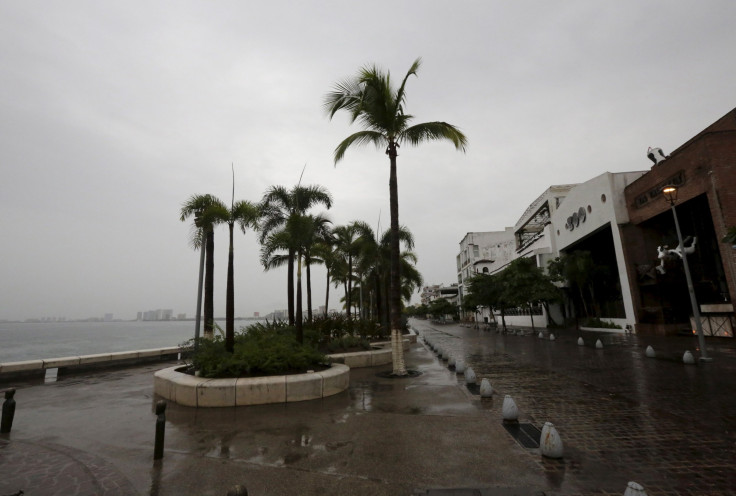Hurricane Patricia Live Stream: Watch Video Feed For Massive Storm That Makes Landfall In Southwestern Mexico

The eye of the strongest hurricane in recorded history made landfall on Mexico's southwestern Pacific coast about 6 p.m. EDT Friday, with winds of about 165 mph, according to the U.S. National Hurricane Center in Miami. The massive storm first touched down near Cuixmala, about 55 miles northwest of the port city of Manzanillo, the Associated Press reported.
While the monster storm was still out to sea on Friday afternoon, authorities scrambled to prepare for landfall. Hurricane Patricia, which built rapidly into a Category 5 storm, with sustained winds of some 200 miles per hour, is expected to bring torrential downpours.
The excessive winds and potential rainfall "make Patricia the most dangerous storm in history," said Robert Ramirez de la Parra, director of Mexico's Comisión Nacional de Agua (CONAGUA), according to CNN. CONAGUA functions as Mexico's national weather service.
Ramirez de la Parra accurately predicted that the potentially devastating hurricane would make landfall Friday at about 6-7 p.m. EDT, somewhere along the Pacific coast of Mexico's Jalisco state, which includes the tourist hot spot of Puerto Vallarta and is close to Mazanillo and Colima. The effects of the storm could be felt even sooner with 100 mph winds hitting the region in the afternoon.
While the storm might change in severity, it does not appear it will let up significantly. "Some fluctuations in intensity are possible this afternoon, but Patricia is expected to remain an extremely dangerous Category 5 hurricane through landfall," the U.S. National Weather Center said in an advisory Friday afternoon.
Slate reported, however, that calling Patricia a Category 5 actually underestimates its strength. Its winds increased by 100 mph in just 24 hours, the largest such change in recorded history and is now approaching "the theoretical maximum strength for a tropical cyclone on planet Earth," the site reported.
Up to 400,00 people could be affected by the storm, which could trigger mudslides and massive amounts of damage, BBC News reported. There some good news in all this: The peak winds are centered over a relatively small area, and once the hurricane makes landfall, its intensity is expected to rapidly weaken.
For those interested in keeping up with the situation in Mexico as the storm approaches, there are live streams here and here. Or simply watch the embedded video of Puerto Vallarta below:
© Copyright IBTimes 2025. All rights reserved.






















